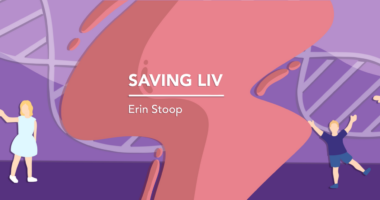Advances in Substrate Reduction Therapy Show Promise for Sanfilippo Syndrome

Substrate reduction therapy (SRT) shows potential in preclinical models and in clinical studies of patients with Sanfilippo syndrome. Treatment with genistein, currently being studied a Phase 3 trial, is the most promising candidate so far, according to a recent review.
The review, “Less Is More: Substrate Reduction Therapy for Lysosomal Storage Disorders,” was published in the International Journal of Molecular Sciences and analyzes the major breakthroughs in the field, discussing the use of SRT as a promising line of therapy.
Several efforts have been made to find a cure or reduce the symptoms of patients with lysosomal storage disorders (LSDs), including those with Sanfilippo syndrome, also known as mucopolysaccharidosis type III (MPS III).
Sanfilippo patients have a deficiency in enzymes involved in the breakdown of large sugar molecules — particularly heparan sulfate — called glycosaminoglycans (GAGs).
The lack or reduction in one of these enzymes (GNS, HGSNAT, NAGLU, and SGSH) leads to the accumulation of GAGs inside lysosomes, which are vesicles within cells that work as waste disposal systems by digesting unwanted materials.
The most investigated therapeutic approach to treat lysosomal diseases has been enzyme replacement therapy (ERT), the administration of a functional enzyme that restores the missing enzyme and its activity.
But there are several limitations to this approach that hamper its application in patients with Sanfilippo syndrome. The main one is the difficulty in delivering a functional enzyme to the brain, an organ that is protected by a semipermeable membrane called the blood brain barrier (BBB) and does not allow most molecules to pass through it.
An alternative and promising line of research that’s gained interest in the recent years is called substrate replacement therapy (SRT).
This approach seeks not to correct the enzyme defect but to slow down the production of the compound (the substrate) accumulating in patients’ tissues. In the case of Sanfilippo syndrome, it reduces the synthesis of GAG products and its accumulation in the brain.
Substrate reduction therapy-based treatments are already approved in the U.S. and Europe to treat other lysosomal storage disorders, such as Zavesca (miglustat) and Cerdelga (eliglustat), which are indicated for Gaucher disease type 1 and Niemann-Pick type C disease.
Sanfilippo syndrome is also considered a suitable target for substrate reduction therapy. From 2006 to 2010, different research teams published promising results using SRT to treat mouse models of MPS II and MPS III.
Treatment with genistein — a compound derived from soy products — or rhodamine B reduced GAG accumulation in the brain, corrected neurological defects, and improved behavioral symptoms.
These experimental results encouraged researchers to conduct an open-label pilot study to evaluate the effectiveness of genistein in patients with Sanfilippo.
The trial included 10 patients with Sanfilippo syndrome types A and B who were treated daily with an oral genistein-rich extract (SE-2000, manufactured by Biofarm), at a dose of 5 mg per kilogram of body weight, for one year.
At the end of the treatment period, all assessed outcomes had significantly improved, including a reduction in GAG urine levels and an improvement in cognitive function. No adverse effects were observed.
Additional follow-up of eight patients for two additional years supported the effectiveness of genistein to prevent neurological declines in the long-term.
On the heels of these promising results, a double-blind, randomized, placebo controlled Phase 3 trial (EudraCT 2013-001479-18) is evaluating the effectiveness of a higher dose of genistein in patients between the ages of 2 and 15 with MPS III (A, B or C).
Patients will be treated for one year and the effectiveness of the treatment will be measured by the levels of heparan sulfate in the cerebrospinal fluid. Secondary endpoints include GAG urine levels, neuropsychological and sleep examinations.
The trial is sponsored by the Manchester University NHS Foundation Trust and funded by the MPS Society and DSM Nutritionals.
Meanwhile, and unlike genistein, the therapeutical development of rhodamine B has not been pursued because there is very little knowledge regarding how it works in the body and its harmful effects in humans, including mucous membrane and skin irritation.
Researchers are actively looking to improve the existing and experimental substrate reduction therapy compounds by reducing their side effects and increasing their specificity.
While treatment with genistein offers hope as a treatment for Sanfilippo syndrome, a combination therapy with other types of medications may improve clinical benefit and allow for a more tailored patient care.
“It is important to notice that ERT/SRT is not the only possible combination approach in the LSD field,” researchers wrote. “In fact, most LSDs have no ERT available. Therefore, different authors have been trying to associate the most efficient SRT compounds available so far with other treatments, which have either been approved or are under evaluation.”






